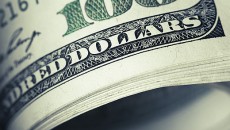Economic Update
This week was ripe with political and economic events. The president delivered the State of The Union address to congress, GDP expanded by 5.7%, Ben Bernanke was reappointed as chairman of the Federal Reserve, new homes sales declined and existing home sales also declined.
In his State of The Union address to Congress Wednesday night, the president made both economic and political policy changes that up till now have been uncharacteristic of his administration. Most notably, the president mentioned an indication of his support of a bill that would lower the capital gain tax on small business investments and also supported an expansion of nuclear energy facilities in the United States. However, along with these economic policy changes, were reinvigorated pleas for congress to move forward with healthcare reform legislation, a bill to help create jobs and a tax on the top 50 largest banks in the United States.
Ben Bernanke was reappointed to his position as chairman of the Federal Reserve after weeks of speculation that both democratic and republican opposition had joined together to block Mr. Bernanke’s reappointment. The panel voted 16 to 7 to reinstate him. Bernanke has recently advocated leaving the Federal Reserve free to do it regulatory duty amidst a bill proposed to allow a congressional audit of the Federal Reserve.
Friday, advanced GDP came in at 5.7%. This is the largest growth in GDP over the last six years. Seeming to stand in stark contrast to the Good news in GDP, were existing and new home sales, which came in less than expected. The decrease in sales seems to undermine what is widely believed to be a recovery of the housing market.
The political and economic data resulted in negative bias, which seems to have led to declines in the market throughout the week.
– R. Belsky
U.S. Economy: Durable Goods Orders Rise More Claims than Forecast
The Durable Goods Orders figure may indicate future production changes. It is a government report made each month which measures consumer spending on long-term purchases, products that are expected to last more than three years. It is intended to offer a gauge of the future of the manufacturing industry. Usually, transportation orders are taken out because the numbers are very volatile (ex: big ticket orders for airplanes)
“You’re starting to see a good turnaround in equipment spending,” said Michael Feroli, an economist at JPMorgan Chase & Co. in New York who forecast a 1% rise in orders excluding transportation. “Generally, you do see equipment spending and hiring move together, so this is hopefully a good sign that businesses are coming out of their shells.”
Bookings for durable goods excluding transportation equipment climbed 0.9%, exceeding the median forecast. Companies such as Intel will continue to churn out more goods to stop inventories from falling further, pointing to gains in investment. The Fed said that although consumer spending is expanding, it is in part “constrained by a weak labor market,” underscoring the need to maintain low interest rates. The figures are signaling that business investments are contributing to growth in the final three months of 2009. “With demand continuing to be solid and inventories well below historic levels, our outlook for the first quarter reflects the likelihood of sequential growth” said Michael Feroli.
– A. Medina
Helmerich and Payne Earnings Surprise
This week in earnings, Helmerich and Payne (HP US Equity) released its FY 1Q10 (fiscal year, first quarter of 2010) on January 28. The firm came out with earnings of .59/share, beating analysts’ expectations of .50/share. The company is primarily a contract oil and gas drilling firm. They supply rigs for oil and gas exploration & production companies. It owns and operates land rigs in the US and other international locations, with most of its offshore rigs located in the Gulf of Mexico. They are geared towards high quality and high tech rigs and service. In 2009, they had a rig fleet of 254 rigs.
Looking into their earnings report for 1Q10, the company has seen some positive movement in revenues and margins when comparing to their last quarter 4Q09. Their operating revenues in the US land segment increased from 269 million to 285 million, or 5.95%. In their offshore segment, revenues increased from 47.28 million to 52.29 million, a 10.60% increase. The international segment increased from 43.1 million to 59.4 million, a 37.82% increase. Overall, total revenues increased by 10.39%, to 400 million dollars. The increase in offshore and international revenue gives H&P a slightly more diversified revenue stream, bringing in a higher percentage change of revenue from these segments. The company enjoyed slimmer operating margins, which increased from 23.84% to 25.61% QoQ.
Looking forward, as the firm’s level of activity in Venezuela declined from 11 active rigs to zero, they see more expansion to other international areas. This quarter’s international improvement came mainly from Mexico, Argentina, and Africa. Even while scaling down in Venezuela by 100% in utilization, they managed to increase overall international rigs utilization by 3% to 44%. H&P says they will keep the rigs idle while in search of drilling opportunities in Venezuela, but is not planning on getting things moving in the country until pending receivables are collected and converted to USD. With the recent devaluation in Venezuela, this is a high priority for the firm.
CEO Hans Helmerich says “Customers are signaling that their spending plans are increasing in 2010 and the company is well positioned with the newest and most technologically advanced land rig fleet to deliver the best value in the market”. He goes on to mention that this will be their niche moving forward, as there is still an oversupply of rigs, yet on a fraction are higher technology.
H&P’s stock is currently trading at 42.65 USD.
-A.Tarhini
Article submitted by: Alex Tarhini, Alejandro Medina and Robert Belsky of the Capital Markets Lab. To learn more about the Capital Markets Lab please visit https://business.fiu.edu/capital-markets-lab/.




